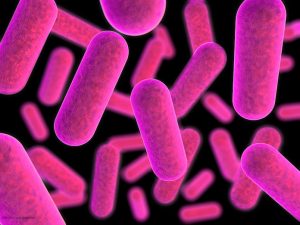An article in the Oregonian details how Denmark started an intensive effort twenty years ago to try to control Salmonella infections in poultry after an increase in human illness. In the U.S., at least 200,000 people are sickened ever year by Salmonella in poultry. The USDA launched a Salmonella Action Plan last year that has been widely criticized because it just controls contamination during poultry processing. Meanwhile, Denmark has practically eradicated Salmonella in chicken.
 There is zero tolerance for Salmonella bacteria in poultry in Denmark. In the U.S., Salmonella contamination is accepted as a given. The huge Foster Farms chicken Salmonella outbreak from early 2013 through this year, which has sickened at least 14,000 consumers and hospitalized hundreds, is considered acceptable. The seven strains of Salmonella linked to that outbreak are also antibiotic-resistant, which may have resulted in more serious human illnesses. No recalls were ever issued by the USDA or Foster Farms.
There is zero tolerance for Salmonella bacteria in poultry in Denmark. In the U.S., Salmonella contamination is accepted as a given. The huge Foster Farms chicken Salmonella outbreak from early 2013 through this year, which has sickened at least 14,000 consumers and hospitalized hundreds, is considered acceptable. The seven strains of Salmonella linked to that outbreak are also antibiotic-resistant, which may have resulted in more serious human illnesses. No recalls were ever issued by the USDA or Foster Farms.
In 1988, cases of Salmonella in Denmark increased from 450 confirmed cases per year to 3500. In response, the poultry industry implemented voluntary control measures in 1989 that became mandatory. Chicken fecal samples are collected and tested. If a positive sample was found, the whole flock was slaughtered. The government compensated farmers for their losses. The costs for that type of control were enormous, so a national program was launched that attacked Salmonella at the source.
Scientists realized that Salmonella must be eliminated in the breeding stock, because all of the poultry and eggs produced in the country came from a relatively small number of breeders. A breakthrough came in the testing method: testing the egg yolk for antibodies against Salmonella is more effective than testing the birds for the bacteria. All day-old chicks sold to producers must be free of Salmonella.
Once Salmonella was virtually eliminated in breeding stock, strict sanitation methods were employed, and chicken houses were redesigned. Feed was heated to kill bacteria, and methods to prevent cross-contamination of feed and the birds themselves was implemented. The Danes did not vaccinate the birds, since antibiotic-resistant bacteria can develop using that method and serologic testing is difficult in vaccinated birds because of cross-reaction.
These controls are very effective, according to a 2003 article in Emerging Infectious Diseases by the CDC. Frequent testing and top-down eradication of Salmonella is effective in all types of chickens, including free range, deep litter, organic, and caged. That 11-year-old report by the CDC states that “efforts have been cost beneficial and those benefits are likely to increase with time.” Which they have.
Millions of dollars in health care costs and lost wages have been saved in Denmark because very few Salmonella illnesses from poultry occur. Officials estimate that 150,000 illnesses were prevented from 1997 and 2004, saving $63 million in medical costs alone. Chicken is more expensive in Denmark, but having no medical bills for a serious illness more than make up for it.
According to an article in ScienceNordic, there were zero illnesses from Salmonella related to chicken in 2011. And Salmonella infections linked to pork have dropped from 14% to 7%. Salmonella in eggs is also very low, and the number of cases of Salmonella is at a 20-year low. That may be because one of the sources of Salmonella food poisoning is produce. That produce is easily contaminated by wastewater from farms that is used to irrigate farm fields. No Salmonella in the wastewater means no Salmonella on the produce.
So why hasn’t the U.S. government launched a similar program in this country? Very good question.




